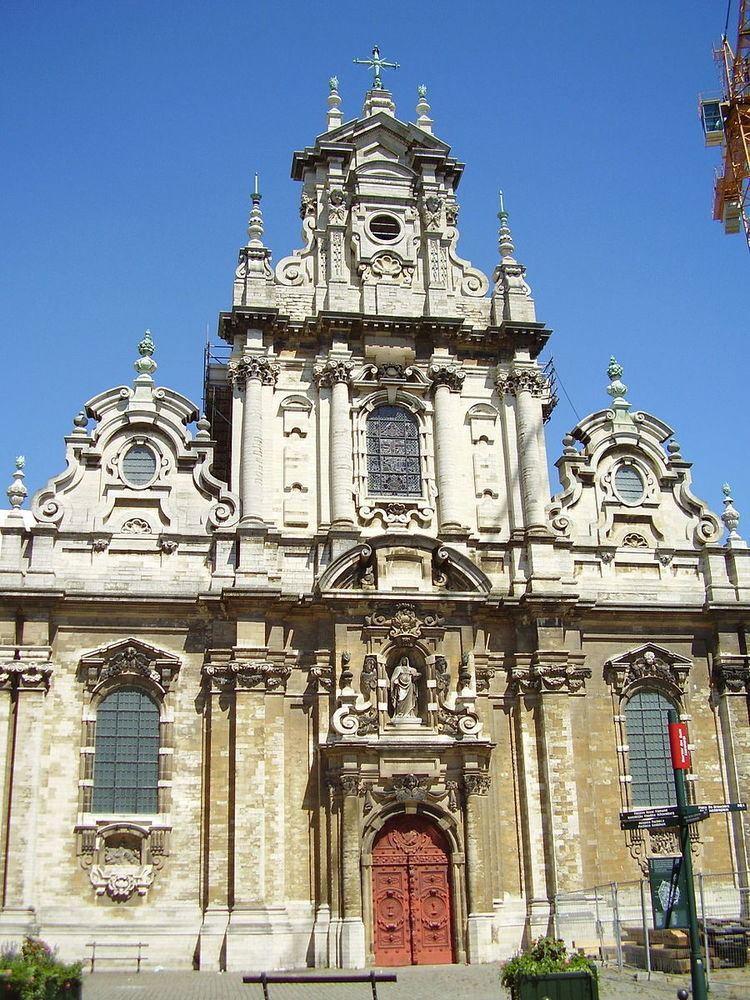Location Brussels, Belgium Ecclesiastical or organizational status Parish Groundbreaking 1657 (1657) Width 62 m Year consecrated 1676 | Affiliation Roman Catholic Architectural type Church Length 20 m Architectural style Baroque architecture Architect Lucas Faydherbe | |
 | ||
Heritage designation National Heritage Site (Belgium) since 5 March 1936 Address Place du Béguinage, 1000 Bruxelles, Belgium Province Roman Catholic Archdiocese of Mechelen-Brussels Similar Beguinage, Chapel Church, Église Sainte‑Catherine de Bruxel, Saint Jacques‑sur‑Coudenberg, Church of Our Blessed L | ||
The Church of Saint John the Baptist at the Béguinage (French: Saint-Jean-Baptiste au Béguinage, Dutch: Sint-Jan-de-Doper op Het Begijnhof) is a Roman Catholic parish church located in Brussels, Belgium. Attributed to the Flemish architect Lucas Faydherbe, this building is a notable illustration of the Italian-influenced Flemish Baroque style of the 17th century. The church was part of the béguinage Notre-Dame de la Vigne of Brussels.
Contents
History
The Beguines were lay women who lived a communal life but were not bound by perpetual vows. Three court Beguinages existed in Brussels but the first and largest court Beguinage was the Béguinage de Notre-Dame de la Vigne which was founded before 1247 outside the city walls.
Located near today's place du Beguinage, the community composed a miniature village of individual dwelling with a mill, laundry, and flower and vegetable garden enclosed within a wall. The Beguines built an infirmary and a small chapel dedicated to Our Lady of the Vineyard served as a place of worship.
Because their community had grown to 1200 beguines at the end of the 13th century, a larger Gothic church was built at the same location where the present-day building is located. The women engaged in weaving wool and, from the 16th century onward, in making lace. From the start the Rue du Béguinage (Beguines Street) formed the main axis of this large triangular domain of which the Rue de Laeken (Laeken Street) formed the base. The area between rue de Laeken and Quai au Bois à Brûler was known as the Beguinage quarter during the Middle Ages.
The Beguines were dispersed in 1797 during the French regime. The grounds were parceled out gradually and streets laid out. The infirmary was renovated and transformed into the Hospice Pacheco.
In 1998 the tragic expulsion of Semira Adamu, who died after police violence, triggered the occupation of the church by candidates political refugees awaiting regularization from October 1998 to January 1999.
Building
The previous church was a Gothic building with 3 naves and a transept that was destroyed by calvinists in 1584 during the Calvinist Republic of Brussels which lasted from 1577 to 1585. The Beguines decided to rebuild their church in Baroque style and its construction started in 1657. Attributed to the Flemish architect Lucas Faydherbe, this church is a notable illustration of the Italian-influenced Flemish Baroque style of the 17th century. Its façade is considered to be one of the most beautiful in Belgium. The church was restored after it was ravaged by a fire in November 2000.
